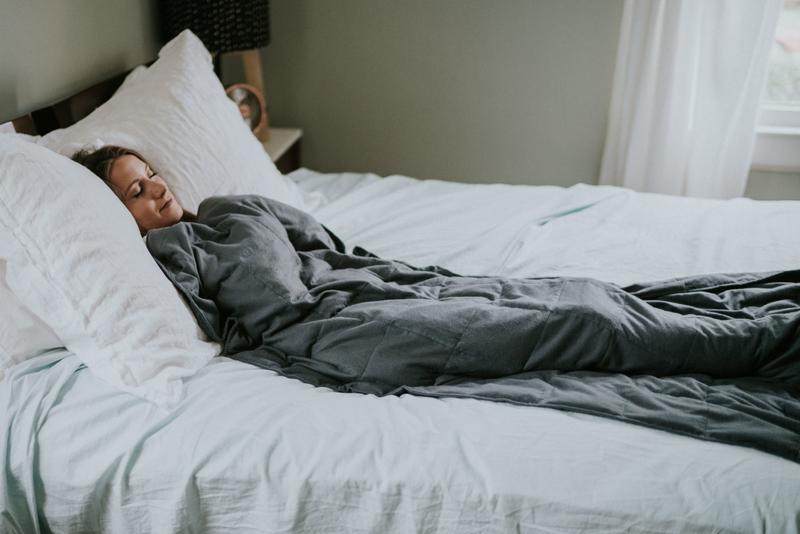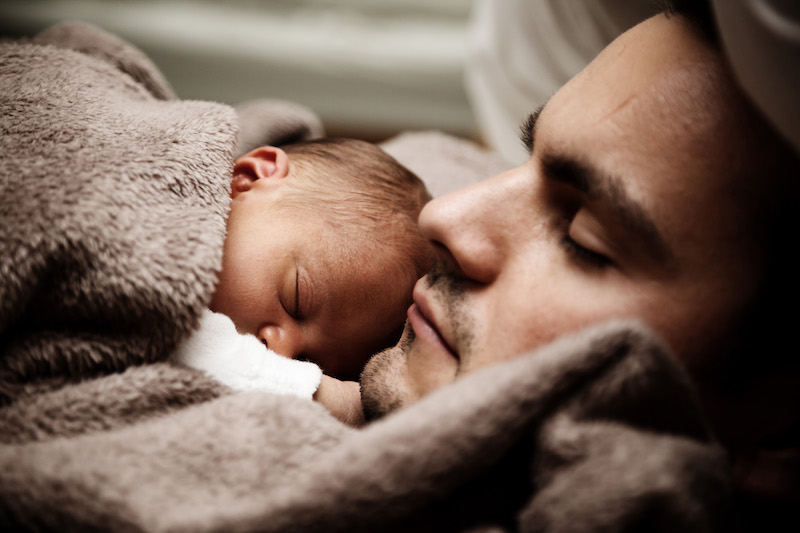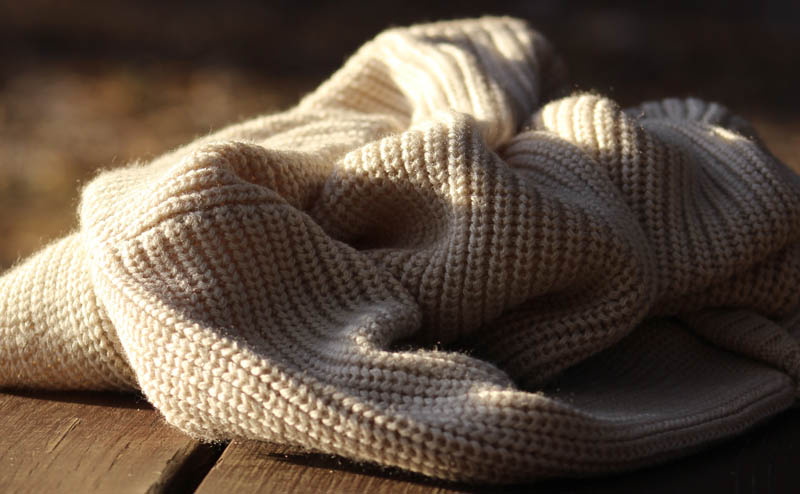How To Choose Your Weighted Blanket Weight?

Weighted blankets weigh significantly more than conventional types. These blankets are now becoming hugely popular due to their numerous health benefits, aside from their main purpose of promoting better sleep. They can help many people from all walks of life get a good night’s sleep and at the same time, relieve the symptoms of many conditions. These include autism, anxiety, stress, panic attack, stress disorders, insomnia, restless leg syndrome, and attention deficit hyperactivity disorder (ADHD), to name a few. In today’s article, we’ll talk about how to choose a weighted blanket weight, and how does it all work?
How Do Weighted Blankets Work?
Weighted blankets are popular because of the wide range of health benefits they offer.
The science behind them is the deep touch pressure stimulation proven to relieve lots of mental health issues and symptoms. It’s the feeling of being massaged, hugged, cuddled, and grounded. As a result, the brain releases more serotonin, to boost the mood and promote an overall feeling of calm and relaxation. Low levels of serotonin have been linked to the development of the conditions mentioned above. Hence, using heavy comforters is a way to help boost these neurotransmitters’ levels in the body, promoting relaxation, sleep, and relief of symptoms.
They can also benefit children and teens who have autism and attention deficit hyperactivity disorder (ADHD). It improves the symptoms of sensory processing disorder and other related conditions. These can affect sleeping patterns among children.
Aside from that, they can offer a sound sleep at night, even for people suffering from restless leg syndrome and insomnia. Deep touch pressure also stimulates the release of melatonin, which is the body’s control center for the circadian rhythm. It also triggers the release of oxytocin to promote an overall feeling of relaxation.
Also, DTP pressure decreases cortisol levels, the hormone linked to stress. It has been linked to various diseases and conditions such as weight gain, gut problems, headaches, and even heart disease.
Given that a weighted blanket is heavier and thicker than most traditional throws, the configuration should be individualized for patients. It’s important to understand why you should have varying weights, depending on the bodyweight of the person it is intended for. Please read on to understand why.
Weighted Blanket Weight For Kids

Weighted blankets for kids can address a wide range of conditions, such as stress and sleep disorders. Particularly help relieve the symptoms of autism and attention deficit hyperactivity disorder (ADHD).
For parents of children with these developmental problems, always consult your healthcare professional or licensed therapist to get the accurate weight of your child. This way, you can properly determine the right size of the blanket to use. In some cases, a pediatrician or a developmental doctor may recommend the use of one to relieve the symptoms of autism and ADHD in kids.
First off, keep in mind that they are not recommended products for any child under one year old. It can be dangerous for their health. Small covers can be used for children between the age of 1 and 5, and take note of the recommended weight based on the child’s body weight plus one pound.
In choosing the right size of your child’s comforter, always remember the 10 percent rule. According to guidelines, the weight of the blanket should be 10 percent of the child’s body weight, then add one pound. Also, some parents may worry about the children outgrowing it quickly. Never buy one that’s too heavy for your child because it’s dangerous to use. Purchase the one that is appropriate for the child’s weight now since they can still continue to use it for years.
For elementary-aged children, between the age of 6 to 12, it’s recommended to use medium size, but you still need to compute 10 percent of the child’s body weight to get the right weight, plus two pounds.
Remember to never leave a toddler or a small kid unattended while using a weighted blanket. Ensure that the child has the strength to push it off their body if they feel constricted. This way, you can avoid accidents and suffocation among small kids who use heavy covers. Choosing the right weight is crucial for children.
Blanket Weight For Teens
Teens may have varying weights, too. Teenagers aged 13 and above, they’re recommended a large or extra-large size. Also, just like other age groups, it’s important to still apply the 10 percent rule, plus three pounds. Some teens are larger in size for their age, so they can use and share adult sizes.
Blanket Weight For Adults

When selecting a weighted blanket, it’s essential to remember that everyone has unique needs and preferences. A person may want a heavier feel while another one might feel too constricted with too much weight. There are no hard rules, but experts recommend applying the 10 percent rule.
In choosing a size, compute 10 percent of your body weight. That’s the weight that’s recommended for you to use. Also, as a general rule, always use the weight of the person and not the size of the bed. The typical weight may range between 5 pounds and 25 pounds. Though the general rule is 10 percent of the body weight, some manufacturers recommend between 5 to 15 percent of the user’s body. If you decide to make your own DIY version, according to the guide here, these measurements are correct as well.
For instance, adults weighing 100 to 150 pounds, they’re recommended to use a 5-pound weighted blanket. For people weighing 150 to 200 pounds, they can use a 20-pound weighted blanket. Lastly, people weighing 200 to 250 pounds, can use a 25-pound weighted blanket. Hence, the guidelines are not that strict among adults, compared to toddlers and children. There are different rules when it comes to weighted blankets for couples too.
Final Words

Weighted blankets can help you sleep better, faster, and at the same time, relieve the symptoms of various conditions. It’s important to remember the rules and guidelines in getting your weighted blanket. The 10-percent rule is an important reminder that can help you find the perfect weight for optimum effect. This way, you’re sure that the kids are safe and adults receive the adequate amount of pressure needed to become effective.


Good article, except for the piece on using 10% of your body weight to determine the weight of your blanket. There is no correlation between body weight and how heavy your blanket should be. Although it is a commonly repeated on many weighted blanket sites, it is, in fact, incorrect. The 10% figure originally came from two studies on back injuries in school children caused by using a backpack that was too heavy. In those studies the 10% figure was the point at which the risk of injury increased, it was never a recommendation, even there.
How heavy your weighted blanket should be is simply a matter of personal preference, two individuals the same height and weight may find that they each prefer a blanket which is quite different in weight than the other person. There is no more correlation between body weight and the weight of your blanket than there is between the color of the car you drive and how heavy your blanket should be.
Thank you for sharing that, Karlton, I’ll have a look in the matter and research that further!